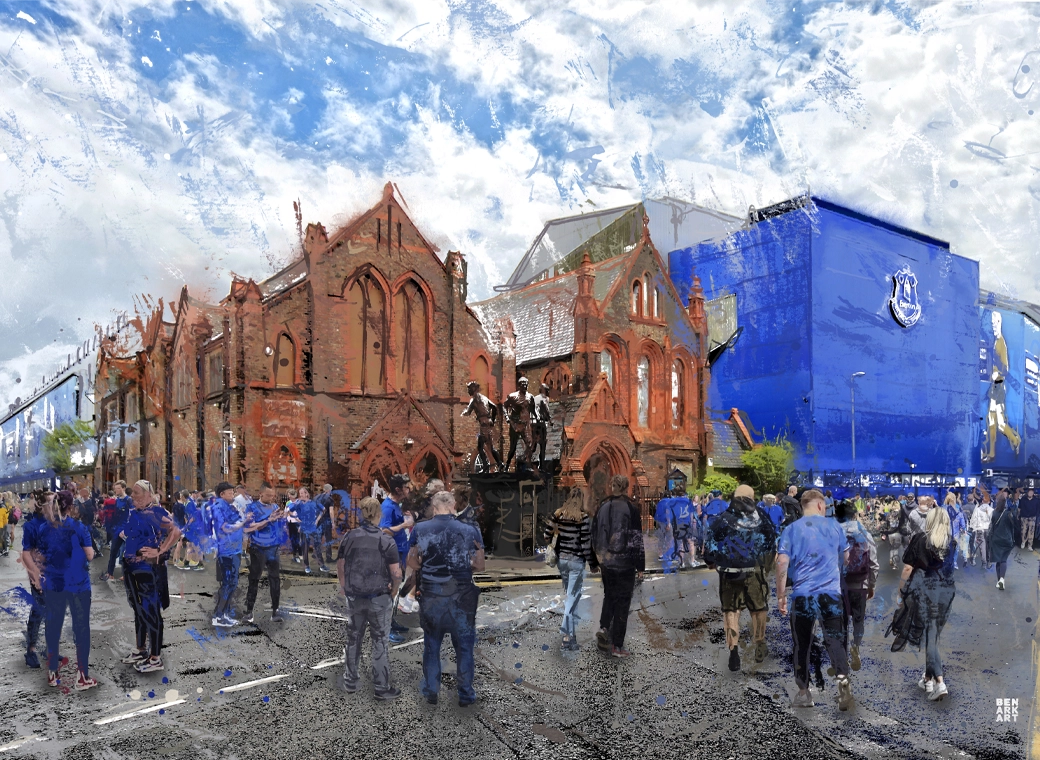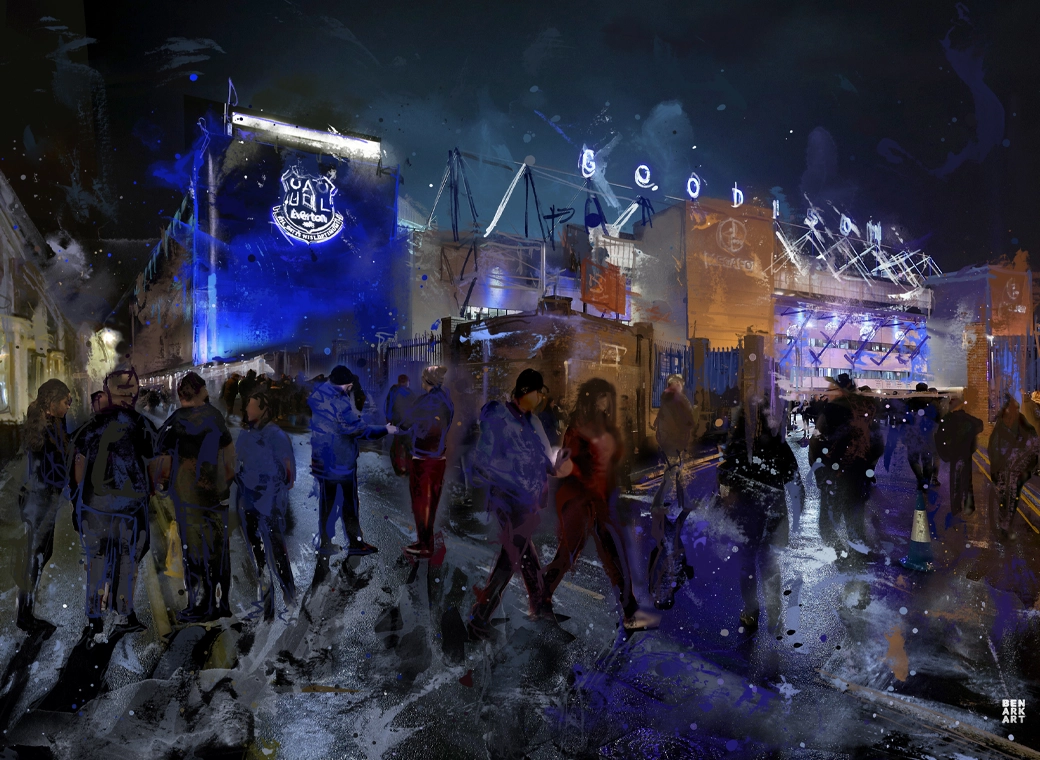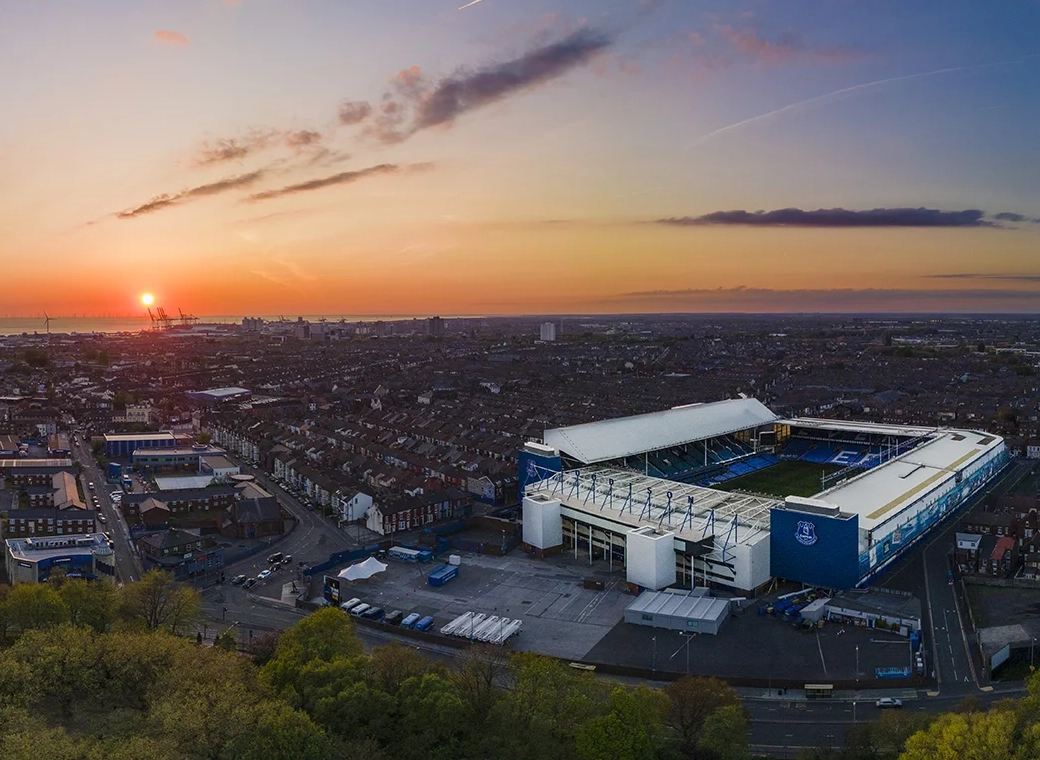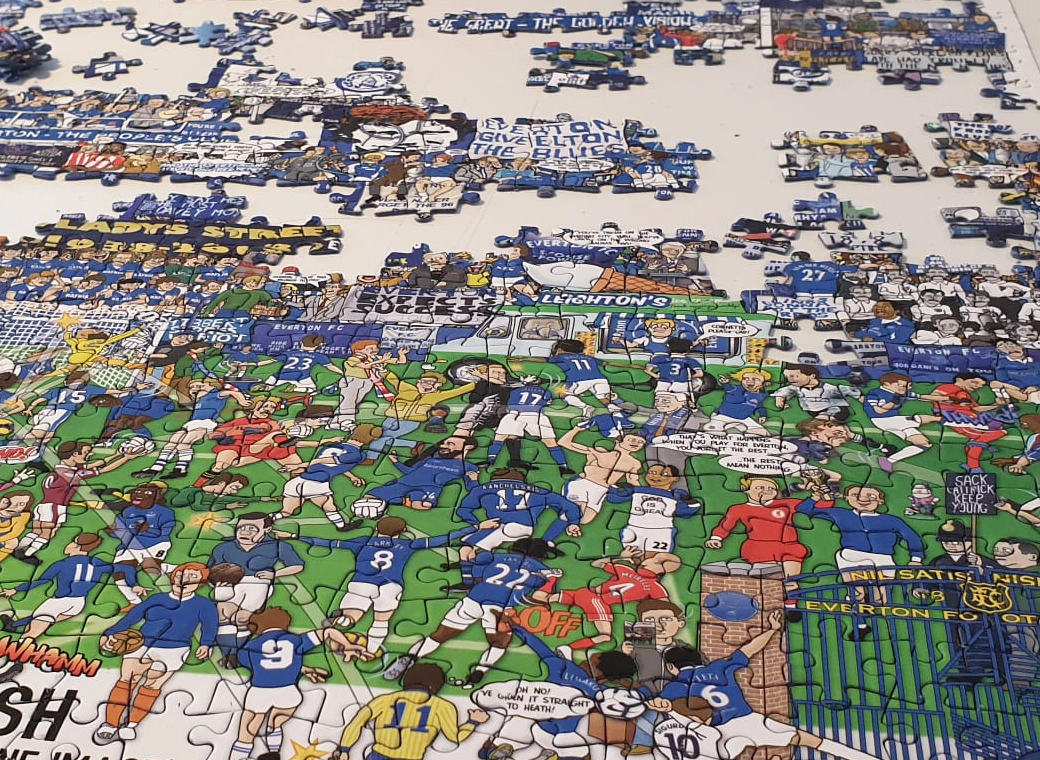Koeman’s Lukaku Substitution Changed Match Against West Brom via Royal Blue Mersey
Tactical analysis of Everton's nerve-wracking road victory against West Brom
At the end of my tactical analysis of
Everton's 1-1 draw against
Tottenham Hotspur last week, I reached two conclusions:
Going forward, [an inability to prevent crosses from and long balls into wide areas] may be the factor that limits Everton’s ability to continue using this 5-2-3 formation. Many other teams will be more than happy to use talented, pacey wide players to create mismatches against Baines, McCarthy, Coleman, or any other defender used in that wing-back position….
Koeman is willing to try different things, something we could not really say of
Roberto Martinez. We saw the Dutchman use a traditional back-four for much of the preseason, but a back-three made sense here, so he went with it. This flexibility will serve Everton well for the rest of the 2016-17 season.
In this week's match, the shortcomings of the 5-2-3 and
Ronald Koeman's willingness to quickly change from it were having were the two main tactical stories.
Let's start by looking at Everton's starting lineup to get an idea of where things were going wrong.
Koeman went with a completely unchanged lineup from the opening weekend's draw, with
James McCarthy still awkwardly slotted in as a right wing-back.
This lineup worked well against Tottenham for two essential reasons.
First, the attacking trio had a lot of freedom to press the ball and find space once the Toffees forced a turnover, creating opportunities on the counter attack.
Second, the presence of three central defenders and two holding midfielders just ahead of them significantly limited Tottenham's space in the central attacking channel, where Spurs generally want to build their attacks.
The problem, as Mike pointed out in the opponent analysis earlier this week, is that these factors are completely moot against
Tony Pulis and
West Bromwich Albion. Any Tony Pulis side looks to defend in numbers and concede possession, completely nullifying opportunities to play on the break.
In attack, West Brom wants to do two things — whip in crosses to Salomon Rondon in open play and earn set piece opportunities that the club's big players can latch onto.
In short, all of the advantages created by the 5-2-3 last week completely disappeared this week. The result was an opening 37 minutes of horror for the Toffees.
Everton dominated possession in the opening half hour, but struggled to create anything substantive in attack. Two factors caused these struggles.
First, there were simply a ton of big, strong players in the central channel for West Brom, and Gerard Deulofeu does not have the physical ability to compete with that type of player. Without transition opportunities to use his speed and lacking the strength to compete with the numbers around him, Deulofeu was essentially silent in the opening half hour.
His activity map (courtesy of FourFourTwo.com) makes this clear.
Deulofeu had one unsuccessful aerial duel, seven completed passes, and three incomplete passes. Perhaps most notably, he didn't even record a dribble take-on, usually a staple of the young Spaniard's game.
Second, Everton's attack was substantially lopsided. As was the case last week, the attacking trio of the 5-2-3 was not tasked with providing width. Instead, the wing-backs were supposed to provide width in the attack.
Leighton Baines did a decent job of getting involved in the attack on the left side, but McCarthy really struggled to make an impact on the right. It was a reasonable struggle, given that his natural position is central midfield, but it was painfully obvious for his entire time on the pitch.
The breakdown of Everton's attacking-third possession time while McCarthy was on the pitch (courtesy of EvertonFC.com) makes clear this problem.
Everton's attack was reliant almost solely on the left side of the pitch, making the attack predictable and giving West Brom an easy job in preventing the Toffees from creating much danger.
Defensively, things weren't much better for Koeman's side in the early going.
Recall that with Everton playing a five-man backline and looking for the wing-backs to get into the attack, there was the potential for players to get in behind Baines and McCarthy. Additionally, with the attacking players not adopting wide positions, it was very easy for West Brom to create 1 v. 2 or 2 v. 3 situations in those wide areas.
With Rondon at striker, West Brom was happy to take advantage of these factors, get the ball into wide areas behind the wing-backs or between the wing-backs and forwards, and put the ball into the box for Rondon. A look at West Brom's long passes and crosses before the 38th minute makes this clear.
In the time before the substitution, West Brom found the gaps in Everton's defense with ease, and used those positions to do what they do best — cross the ball toward a big striker and win set pieces in dangerous areas.
Before the Baggies' goal, Barkley and McCarthy failed to closed down a West Brom midfielder along the wing 50 yards from goal, allowing an aerial ball to come in toward Rondon. Ramiro Funes Mori failed to deal with the danger, Rondon got a shot off that
Maarten Stekelenburg saved out for a corner, and West Brom scored on the ensuing corner kick.
After 38 minutes of these struggles, Ronald Koeman had seen enough and made a change — bringing me to the second point I raised at the start of this piece, his flexibility.
In the days of Roberto Martinez, we would have had to wait 60 or 70 minutes before the Spaniard finally conceded his mistake and made a substitution to turn the match around. Koeman clearly saw the error in his ways much earlier, and brought on
Romelu Lukaku for James McCarthy.
Koeman went to the 4-2-3-1 we've grown accustomed to, with Lukaku coming in up top, Deulofeu and Mirallas moving to the wings, and Mason Holgate moving to right-back.
In attack, this change created greater balance between Everton's left and right wings. After the substitution, Everton's attacking third possession was evenly split at around 35% on each wing, with the remainder coming in the central channel.
Lukaku didn't have a tremendous match, but he filled a role as the team's central striker. His holdup play was decent, and he was a target for passes when moving from the middle third to attacking third, as his passes received map makes clear.
His presence in the middle also allowed Mirallas and Deulofeu to operate in wide areas more frequently, stretching the West Brom backline and creating space for buildup through the middle, much like we saw on Mirallas' goal at the end of the first half.
In defense, the presence of full-backs with increased defensive responsibility meant that West Brom could not as easily find space to get in behind and make crosses from.
Below are West Brom's long balls and crosses from after the Lukaku substitution to the 81st minute when
Ashley Williams came on for Mirallas, signaling that Everton was content to sit deep and defend. Before that point though, the Toffees did a tremendous job of keeping the Baggies from being able to attack in the way they prefer.
In that 40+ minute period, West Brom completed no long balls past the top of the 18-yard box and no crosses.
In short, Koeman's early change put the match back on an even tactical playing field — Everton limited West Brom's scoring opportunities and put its best attacking players in their best positions. Against inferior teams, that should be enough to get the Toffees moving in the right direction.
So far this season, we've seen Koeman develop a specific plan to combat a talented team, admit that he made a mistake and made changes to address the problem, and allow his best players to make plays without excessive tinkering. Essentially, in two matches this season we've already seen more from Ronald Koeman than we saw all season from Roberto Martinez in 2015-16.
Read Full Article
Continue reading...




















